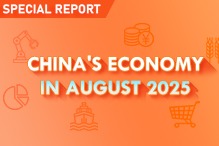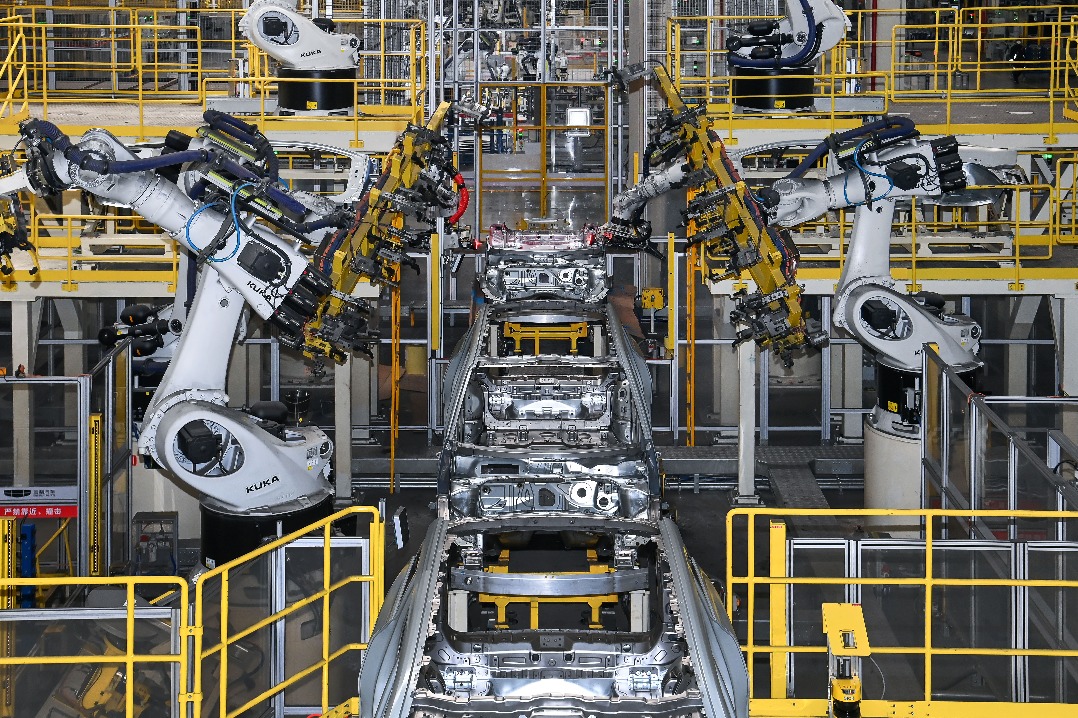Individual growth boosts common prosperity


Common prosperity is a goal that many countries are striving to achieve. China has labeled the goal as a major pursuit while seeking modernization with Chinese characteristics. Achieving common prosperity is undoubtedly an arduous and long-term task, but it is also necessary to realize that it is crucial and fundamental. Currently, gaps in incomes, vocational capacity and public service seen between urban and rural areas, regions and groups remain in China, which hinder the formation of a dual-circulation development pattern. It is time that we start, as soon as possible, to promote common prosperity and narrow the gaps.
China has been actively exploring and studying common prosperity in recent years. Our research team is also doing that well and believe that in order to achieve such a goal, a "bigger cake" must first be made to realize fairer distribution. To this end, it is necessary to place common prosperity in the whole process of social regeneration and to study production, distribution, trade and consumption as a whole. More importantly, solutions should be found beyond the material level and explored in the context of human development.
Seeking solutions for difficulties encountered while promoting common prosperity in China, we should first recognize the challenges faced in the process of achieving common prosperity, in terms of both theoretical and practical considerations.
There are differences in theoretical understanding regarding common prosperity. The combination of "prosperity" and "commonality "implies that apart from a high level of social wealth, individual wealth levels should also be sufficiently high. In other words, it is basically an issue of how to integrate efficiency and fairness.
There are generally three views concerning this issue. The first view is the conflict theory, which holds that efficiency and fairness are two ends of a seesaw and are difficult to balance. Because the economy is essentially in permanent pursuit of greater and higher efficiency, fairness cannot always be guaranteed throughout the whole process.
In this case, the second view emerges — the balance theory — which holds that primary distribution will be made in accordance with efficiency, while secondary distribution will correspond with fairness, where the functioning of the system relies on the government. As a matter of fact, such a theory has not yet fully avoided the dilemma brought about by the conflict theory. That is because, when both are taken into account, efficiency will be emphasized for a period of time, and when it is found that the gap between the rich and the poor widens, fairness becomes the new focus of attention. And when it is found that the emphasis on equity undermines efficiency, the importance of efficiency is emphasized. This will swing back and forth like a pendulum between efficiency and fairness, generating a "pendulum effect" in policymaking.
As we can see, the way to overcome the issues, inconsistencies and contradictions involved in the above two theories is to achieve an effective integration of the two. In the past, when we talked about distribution, we were mainly focused on distribution of wealth or earnings. This is why we cannot break out of the unhealthy linkage between conflict theory and balance theory. Only by seeing beyond the material level and focusing on human development can we integrate efficiency and fairness so that the "seesaw" effect will be eliminated as all the individuals are the root cause of greater value and results. If the gap in competence narrows, the income gap between people will narrow accordingly.
One of the root causes of poverty is inadequate capacity, and group income disparities are basically caused by group capacity gaps. What the government can do to help individuals improve is to address "expectations on distribution". For example, if a government is leveraging distribution programs that may trigger expectations of getting easy money — mostly with help from the government — then there will be little attempt seen in society to improve capabilities, and overall efficiency will naturally decline. To eliminate such unhealthy and unsustainable motivations, expectations on distribution that more closely correspond with effort and income must be developed, identified and stabilized. Principles of distribution expectations have been clearly defined in the policies we are currently applying.
In terms of distribution according to work, there is "work" that can create low added value, and there is also work that brings higher added value. Hence we see a commensurate difference in returns. The "factors" in distribution according to factors of production are allocated and used through the entry of wealth formed by income accumulation in the market, which is usually expressed as "capital". In order to guide more investment in production factors to stimulate economic growth, the government must recognize and protect private property rights and improve market rules. These are also important conditions to guide expectations regarding distribution. Otherwise, no one will be willing to accumulate wealth and use it to run a business or invest in others' enterprises. With clear distribution expectations in society, a social pattern involving efforts from all players, participation by everyone and jointly shared results will be formed, bringing hope for common prosperity.
Referring to fairness, it involves a relationship between fairness of outcome and fairness of opportunity — all while seeking common prosperity. There have been different understandings of "fairness", and some even tend to envision egalitarian solutions, overemphasizing the narrowing of the gap between the rich and the poor. As we can see, before the level of social productive forces is fully developed, fairness of results must be achieved as a common denominator. And the first problem to be solved is to prevent polarization to resolutely stabilize this condition, which for China, under current circumstances, means further stepping up efforts in public services.
China has long been working to ensure fairer societal conditions and prevent socioeconomic divisions, and many related efforts are also committed to promoting basic development capabilities for all. However, in order to achieve common prosperity, it is necessary for the government to continuously help individuals improve development capacities, and further ensure measures, such as fulfilling basic demand for food, education, healthcare and housing. These are key basics to people's livelihoods and are fundamentals for them to improve capacity. When such basic societal guarantees are in place, socioeconomic divisions can be effectively avoided and livelihoods will be continuously improved along with the development of the economy and society.
From a practical point of view, promoting common prosperity faces many challenges. China is still in the initial stage of socialism, and as a major developing country, still has many tasks to complete in terms of reform and development. An aging society is also weighing on such progress. In addition, China is sparing no efforts to ensure its development remains on a steady track amid global uncertainties.
Apart from the above issues, what should be given more attention in the future to this end are rural-urban differences in China. Over the years, we have continuously narrowed the gap between urban and rural areas and promoted the integrated development of city and countryside, especially after the proposal of the rural revitalization strategy, which has effectively narrowed the gap between urban and rural areas and their respective residents. However, urban-rural gaps still exist in the nation.
Seen from a demographic perspective, encouraging more urbanization is a tough nut to crack in the process of achieving modernization with Chinese characteristics.
In recent years, China has made many attempts — both in terms of policies and reforms — but there are still obstacles. Population mobility is a phenomenon that brings both opportunity and risk. Population mobility is very important to generate demographic dividends and offers opportunities for rural people to develop vocational skills but if such mobility slows, it will be more difficult for some to obtain better development opportunities. Over the past four decades since the beginning of opening-up, rural migrant workers, as a production factor and growth driver, have played a key role in the nation's development progress, and their skill levels have been effectively improved. Looking ahead, how to ensure they are covered by more social services should be a focus in the next phase of structural reform.
The writer is president of the Chinese Academy of Fiscal Sciences. This article is a translation of an op-ed by the writer for the China Finance 40 Forum, a think tank.
The views don't necessarily reflect those of China Daily.




































